An answer to one of the oldest mysteries at West Baden Springs Hotel?
Could be the case. That’s why Kathy DeJaco visited here this past spring, to see it with her own eyes. A one-of-a-kind expression of art — possibly painted by Kathy’s grandfather and his brothers; most certainly a source of ongoing fascination and speculation.
We’re talking about a part of the hotel known as the Angel Room. It’s a tiny, drum-shaped room hidden in plain sight, between the tip-top of the dome and the circular medallion and pendant that light up and change colors in brilliant hues every night. The iconic West Baden dome rests on 24 ribs of steel (each weighing 4½ tons) that radiate out from a central hub to the 24 pillars that support them.
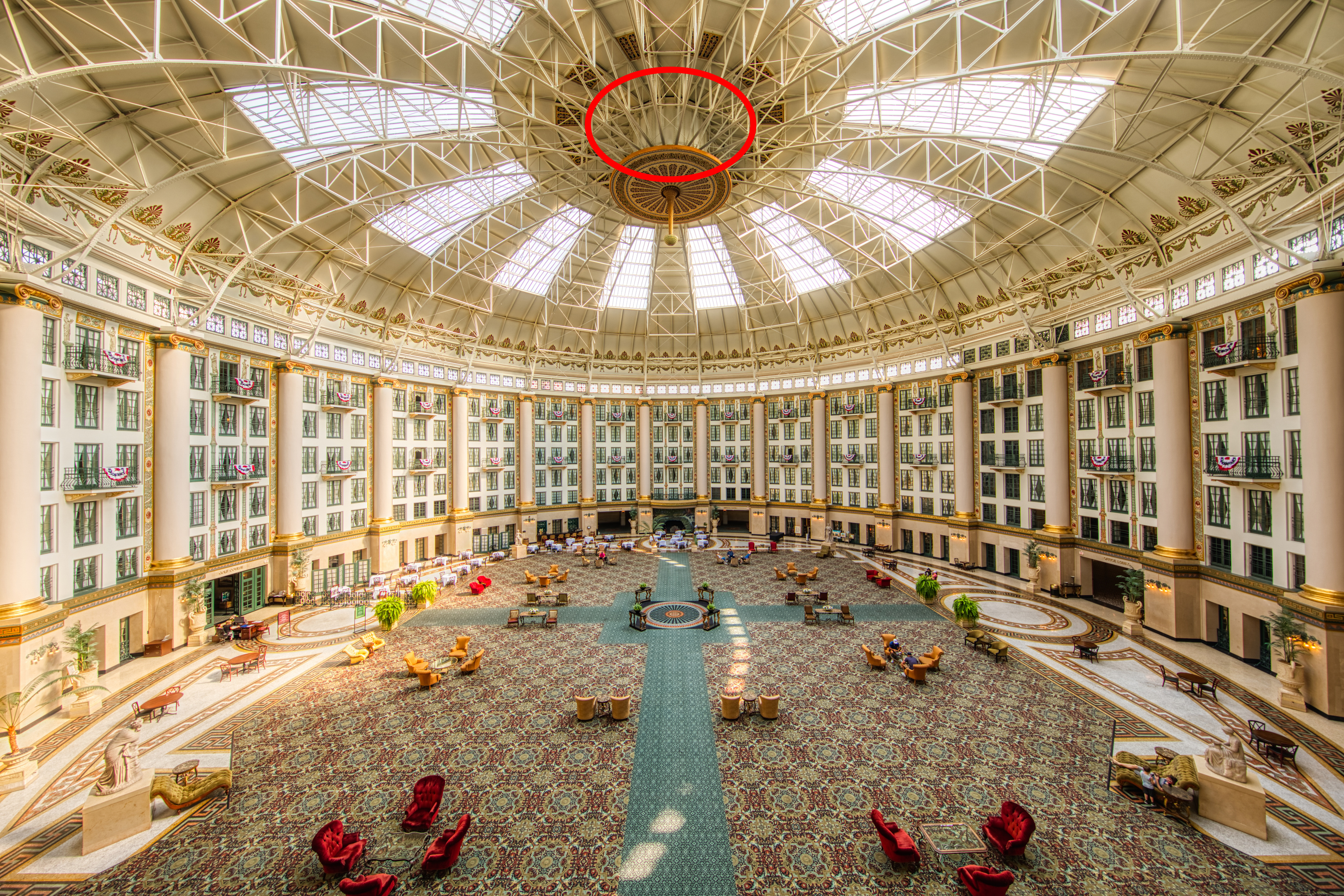
The Angel Room sits above the circular medallion and pendant that hang over the center of the atrium.
This center hub is where the Angel Room sits and where this little mystery takes shape.
Few see this room, because getting here isn’t easy. It requires special access to the roof … climbing a ladder up the dome’s exterior … stepping through a hatch taking you inside the dome … then descending another ladder down into the Angel Room. The trek is worth it. Here inside the Angel Room, you’re now surrounded by eight angel murals painted onto the steel walls. Three more angels hover above, painted onto the wooden ceiling.
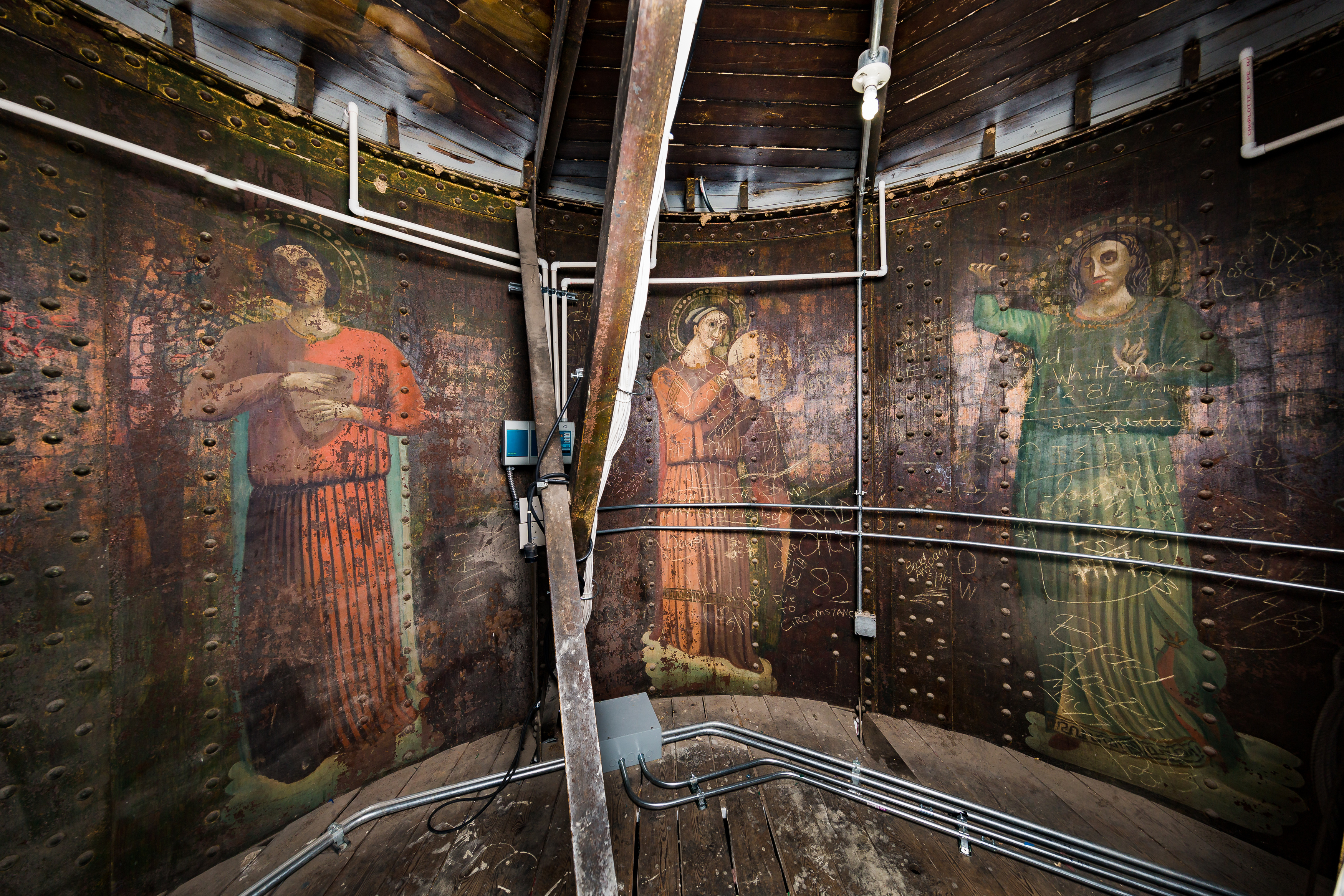
Their colors have faded. Their paint is peeling. Many have been covered in graffiti. Yet the aura and beauty of these angels still radiate. The big question: Who painted these murals?
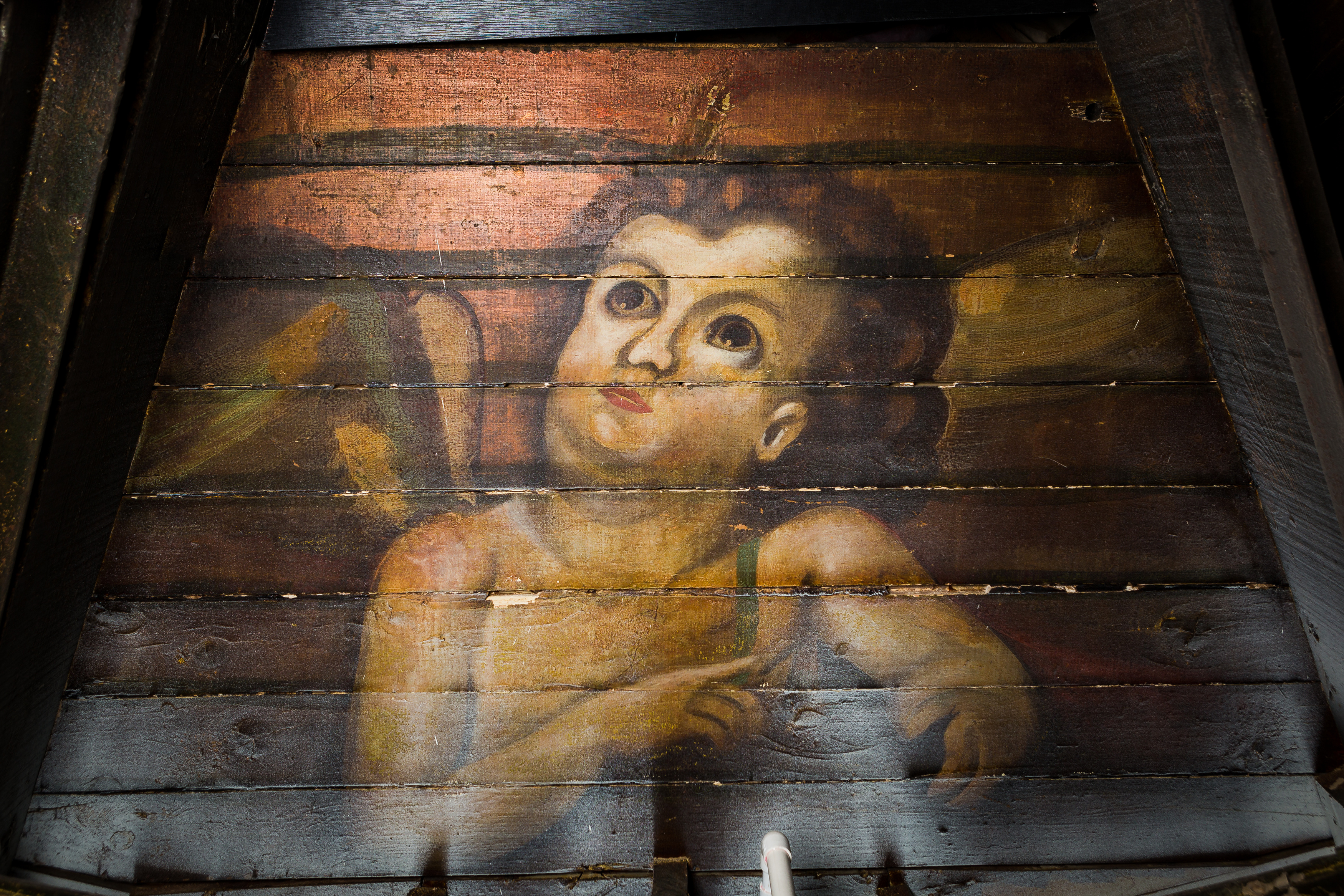
We can probably narrow down the question of “when.” Some time between 1902, when the hotel opened, and 1918, the earliest recognizable graffiti markings. But the murals are undated and unsigned, so that “who” question persists. There are a handful of valid possibilities.
And that leads us back to Kathy DeJaco, whose grandfather is high on that list of suspects.
In fact, Fred DeJaco is mentioned by name on our Angel Room display on the first floor of West Baden Springs Hotel. Here, some of the angel paintings have been reproduced (minus the graffiti) and the story of the Angel Room is outlined along with a handful of theories about who painted the murals. The entry for the DeJaco Brothers:
The DeJaco Brothers were known for painting church murals in Cincinnati and the Tri-State area in the early 1900s. It is interesting to note some of the ties that one brother in particular had to West Baden. Fred DeJaco was trained by Leon Lippert, Cincinnati artist and Bavarian native who had vacationed in French Lick before. In addition, Fred DeJaco’s daughter (Della) married Raymond Cassini, manager of the Cassini Mosaic and Tile Company, in 1936.
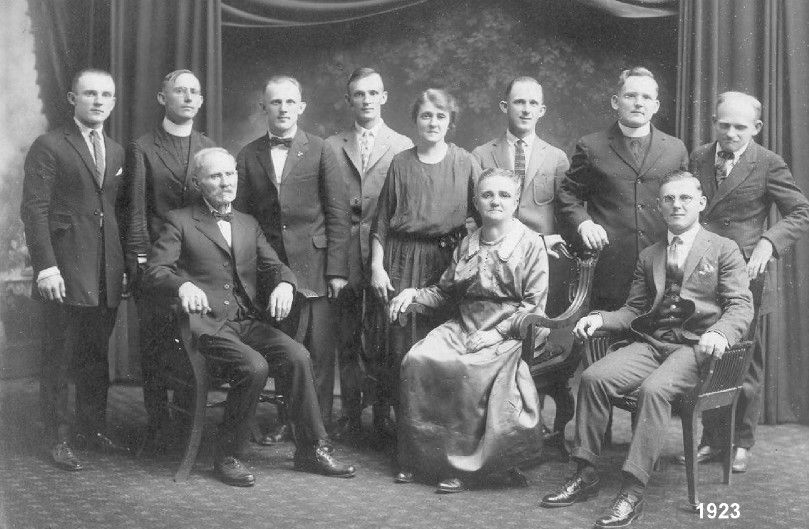
DeJaco family portrait, 1923. Fred DeJaco is standing in back, third from left.
The Cassinis were the Italian artisans from Cincinnati contracted to lay the original atrium floor in 1917, when West Baden Springs Hotel underwent an aesthetic redesign – transforming from rustic and old-fashioned into a flashy Pompeian Court, the same Greek-Roman inspired look we know today.
The DeJacos were well established around this time, too. By 1901 at age 17, Fred was well known as a fresco painter around his hometown of Newport, Kentucky. Fred and his brothers founded the DeJaco Brothers Company, Inc. around 1918, specializing in everything from house painting to interior decorating to gilding. Before their company officially launched, the DeJaco brothers were contracted to paint and decorate the interior of churches throughout Cincinnati and northern Kentucky; they completed more than 20 in total.
Perhaps that Cassini-DeJaco connection sparked something special at West Baden? All those towering columns throughout the atrium needed work, and maybe that’s where all this started.
“They specialized in gold leaf decorating,” Kathy said of her father Fred and his brothers Frank, Louis and Charles who also would’ve been part of the West Baden job. “It is thought that somehow they got the job of decorating the interior of the atrium maybe through a recommendation from the Cassini brothers.”
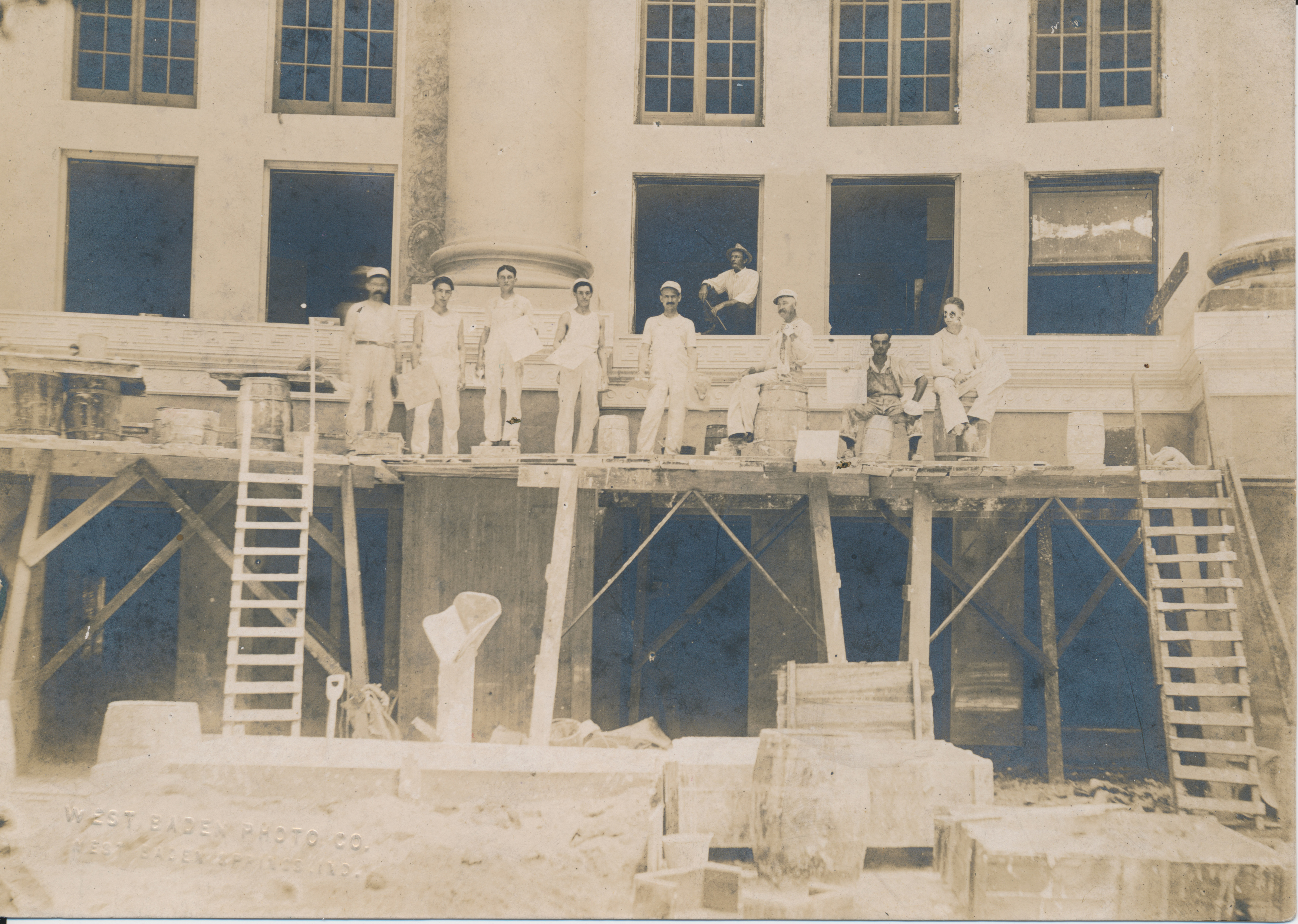
Renovation work in the atrium, 1918.
The info that Kathy knows has been relayed through her older cousin Norb, the de facto DeJaco family historian who has documented a lot of work that Fred DeJaco did, and has even written a book. Among the stories Kathy has heard, one in particular raises some eyebrows as it relates to the Angel Room.
As the story goes, the materials the DeJaco brothers were using on the atrium décor were a precious commodity. One that needed safely stored where no one could steal it.
“This gold leaf paint was gold – it was highly expensive, and they basically made them sleep up there with the gold paint, where it would have been safe from theft,” Kathy says. “That’s where they slept, was in that room area where the angels are painted. And they were here for months.”
It’s been said the craftsmen were here for six months or more, so their window of opportunity would have been ample. As far as other evidence?
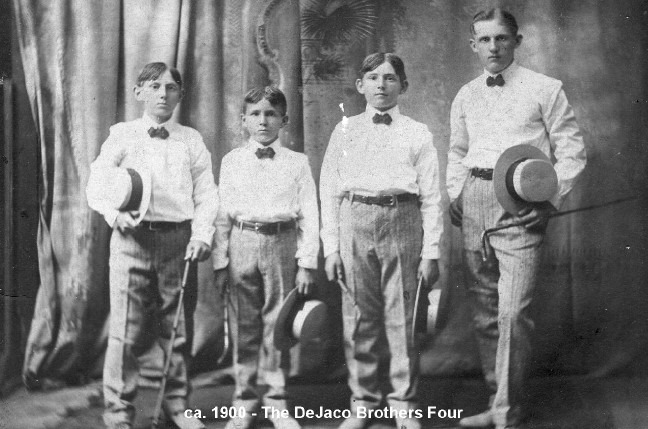
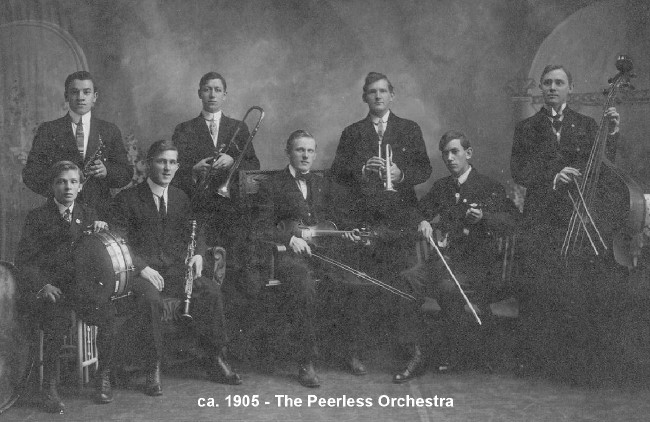
Creative and artistic talent ran deep in the DeJaco family. Before the brothers opened their own painting and decorating business, they formed a Vaudeville-style group and also formed an orchestra.
On one hand, the angels at West Baden are stylistically different than other angels the DeJaco brothers painted in churches in and around Cincinnati. However, those were known works and the West Baden angels were anonymous – maybe they were looking to experiment or try something different without putting their name to it.

The DeJaco brothers were well known for their paintings in churches in the Cincinnati/northern Kentucky area. Fred DeJaco painted "Christ the Priest" (above left) as a special gift for his brother Frank who was ordained as a priest in 1922. They were a family known for creating striking spiritual works of art.
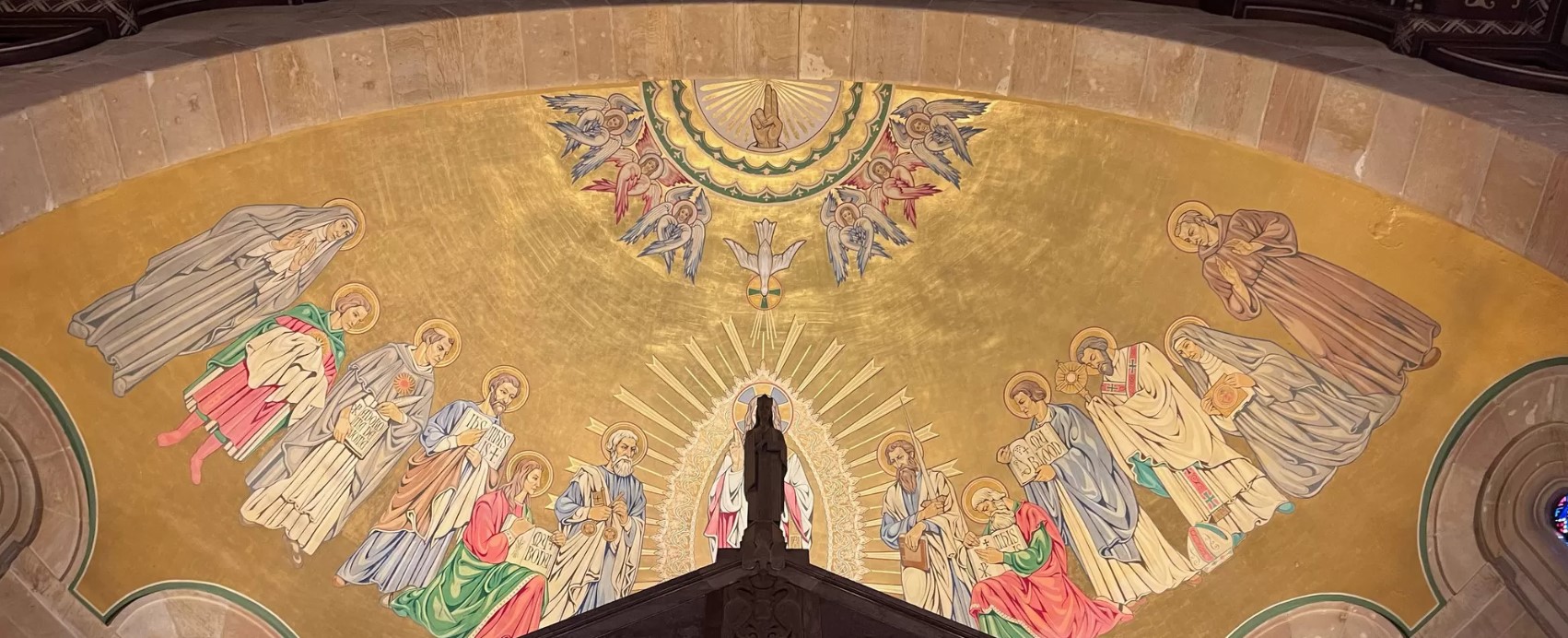
Louis DeJaco went on to become a priest, and the rest of the DeJacos were deeply rooted in Catholic faith, so creating these spiritual images would be on brand. And this was a family whose artistic and creative talent was far-reaching. Their father was a master carver, and before they started their painting and decorating business, the DeJaco brothers also performed in an orchestra and a Vaudeville-style group.
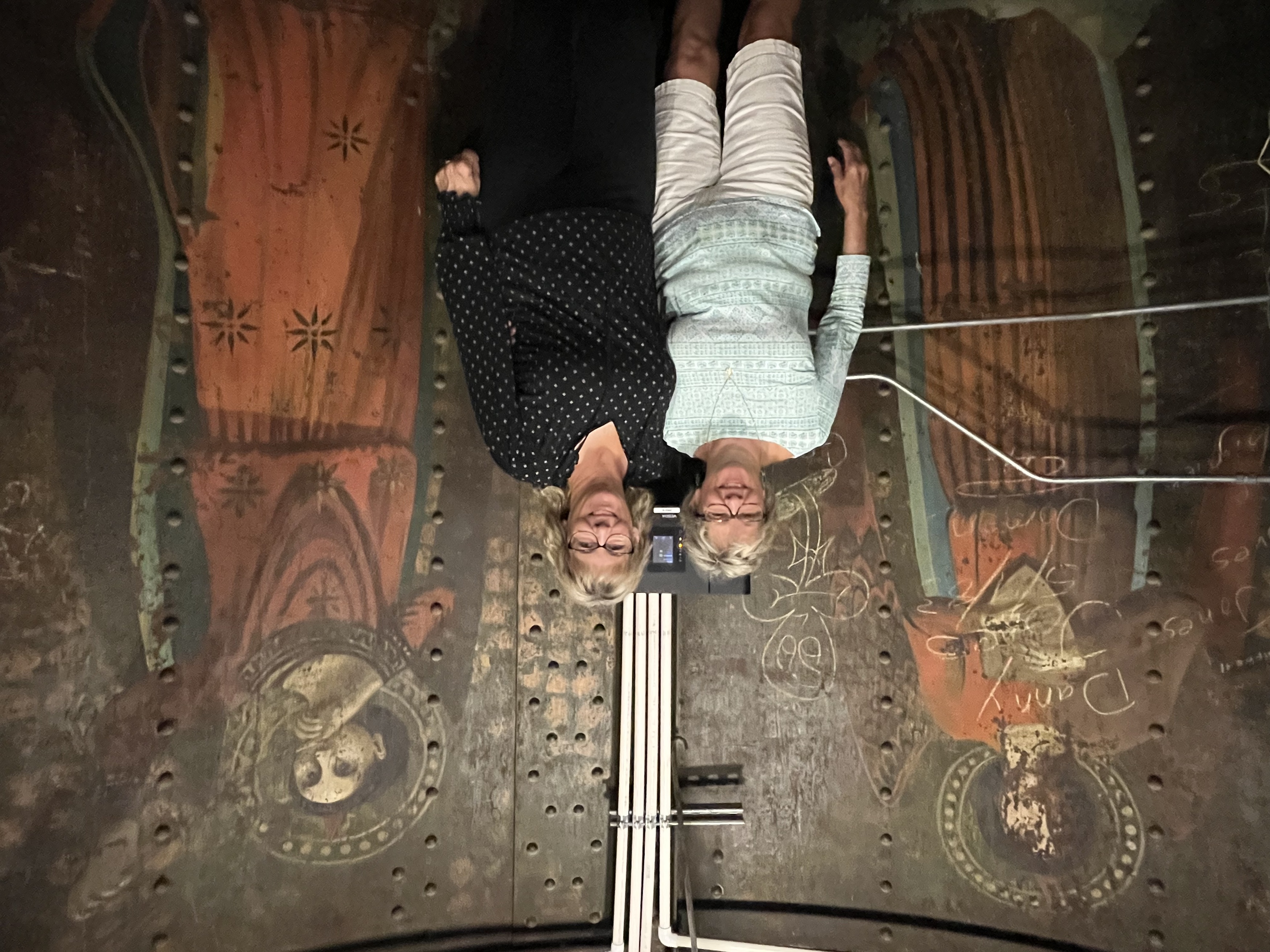
Kathy DeJaco (left) and her sister-in-law got the chance to visit the Angel Room and see the historic murals up close.
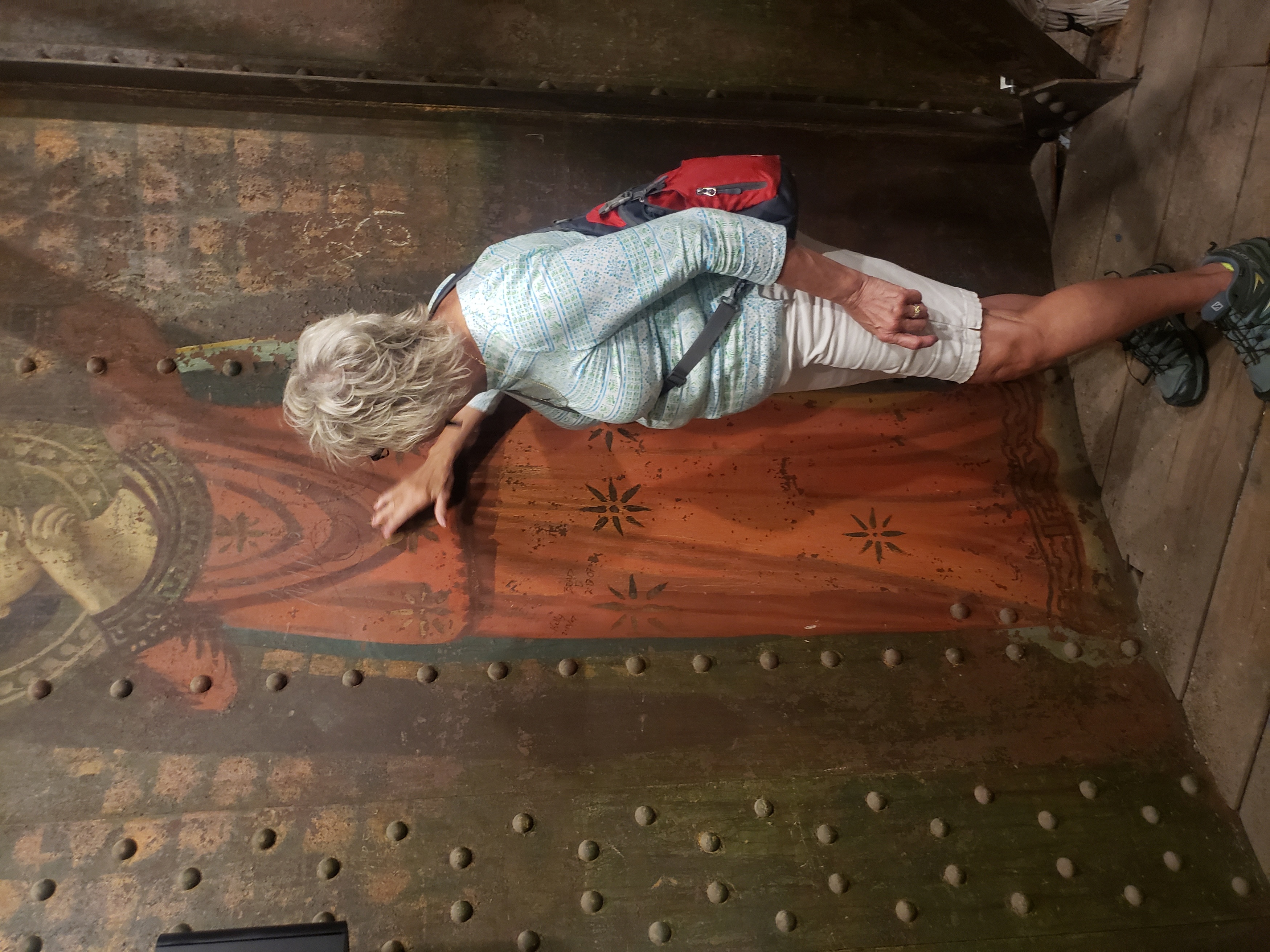
Like some of the other mysteries of West Baden Springs Hotel’s past, the Angel Room will continue to intrigue. It certainly does for Kathy DeJaco, whose visit here to West Baden included a rare visit to the top of the dome to see the Angel Room and the mysterious artwork that her descendants might have created.
And the other views throughout West Baden Springs Hotel? They delivered as well.
“Oh, I’m stunned,” Kathy says, looking around to scan the expanse of the hotel’s famous atrium. “I just can’t believe the vision to build this. When I was reading about this (before visiting), they said it was referred to as the ‘Eighth Wonder of the World.’ I can understand that. This is beautiful. This kind of artwork … you just don’t see this. I’m really glad that they restored the hotel and it’s been able to be kept like it is.”
Angel Room and all, with so many secrets atop the famous dome.